Cultivar Oroblanco Rank Hybrid | Higher classification Citrus | |
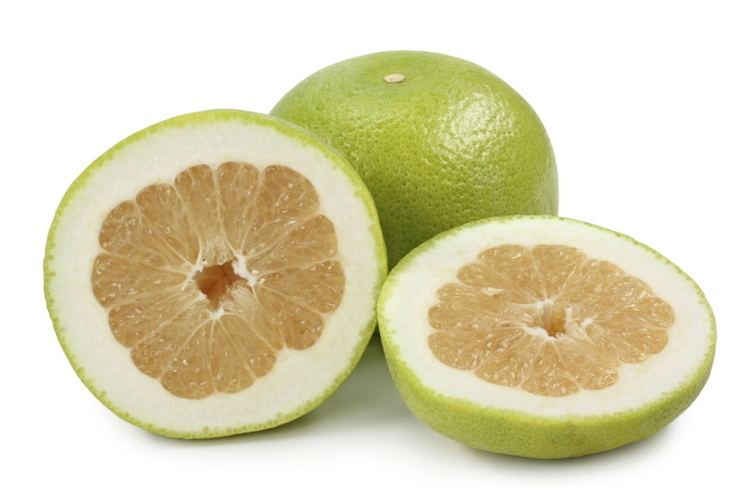 | ||
Hybrid parentage Citrus grandis × C. Paradisi/Citrus maxima/Citrus grandis Scientific name Citrus maxima × Citrus paradisi Similar Pomelo, Tangelo, Ugli fruit, Grapefruit, Kumquat | ||
Oroblanco the best citrus fruit
An oroblanco, oro blanco (white gold) or sweetie (Citrus grandis Osbeck × C. Paradisi Macf.) is a sweet seedless citrus hybrid fruit similar to grapefruit. It is often referred to as oroblanco grapefruit.
Contents

Oroblanco tree
Development
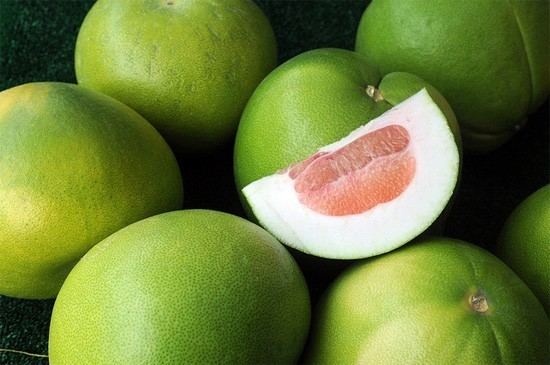
Oroblanco was developed as a cross between a diploid acidless pomelo and a seedy white tetraploid grapefruit, resulting in a triploid seedless fruit that is less acidic and less bitter than the grapefruit.

The oroblanco was patented by the University of California in 1981 after its development by Robert Soost and James W. Cameron at that university's citrus experiment station in Riverside, California. The nine-year project began in 1958 and led to a series of test plantings before a successful variation was refined.
Description
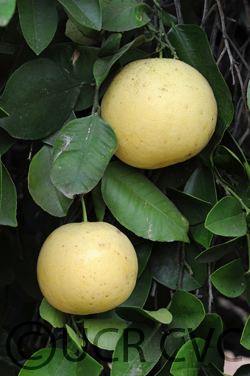
Oroblancos are either round- or oval-shaped with a thicker rind than grapefruit. When eaten, an oroblanco lacks bitterness associated with grapefruits and is rather sweet, even when the outer peel is still green, but the white membranes separating the fleshy segments are bitter and usually discarded. The oroblanco fruit has a similar taste to the scent of its flowers.
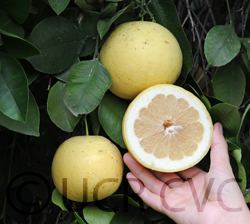
Oroblancos are available from September through December. They may be peeled and eaten like an orange — by separating into segments — and are often eaten at breakfast. They have a thick skin with an inside about the size of a mandarin.
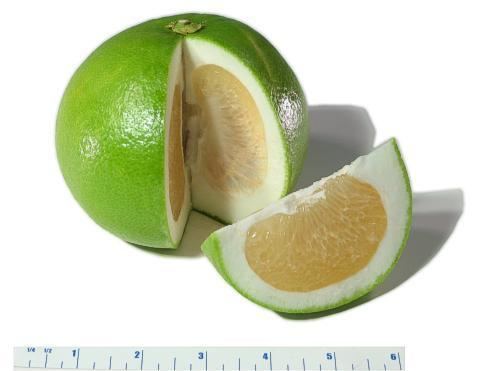
The oroblanco tree does not grow in cold conditions, but does tend to adapt quickly to its environment and is a vigorous grower. It is estimated that oroblanco are grown on 1,500 ha (3,707 acres) in California, and over 10 ha (25 acres) in Australia. A similar fruit has been commonly cultivated in Israel since 1984, from where the name "Sweetie" originated.
Cited descriptions
Following is description by OJB at University of California, Riverside Citrus Variety Collection:
Oroblanco trees grow vigorously to a large size with a somewhat spreading form. The fruit has a smooth greenish-yellow rind at maturity. Oroblanco fruits are oblate in form with a flattened base that has a pronounced indentation. The rind is thicker than the typical grapefruit and both the rind and membranes exhibit the bitterness characteristic of Oroblanco’s pummelo parentage. The flesh is very pale yellow and seedless. The flavor is mild and sweet. Oroblanco is early in its maturity and holds very well on the tree.
Following is from Sunkist:
Oro Blancos are a cross between a white grapefruit and an acidless pummelo. Early in the season they can be readily identified by their bright green exterior. With this variety, green is good. As the season progresses, green turns to golden yellow. In either case the Oro Blanco is ripe, sweet, and ready to eat. Oro Blancos are as big or bigger than a medium sized grapefruit, generally round to flat round, with a slightly thicker rind than a grapefruit. The most notable characteristic of an Oro Blanco is the flavor. It eats sweet and the flesh lacks the bitterness sometimes associated with grapefruit. Those that have sampled them describe the flavor as a grapefruit with the sugar already added. Oro Blancos are available from the end of October to mid April.
